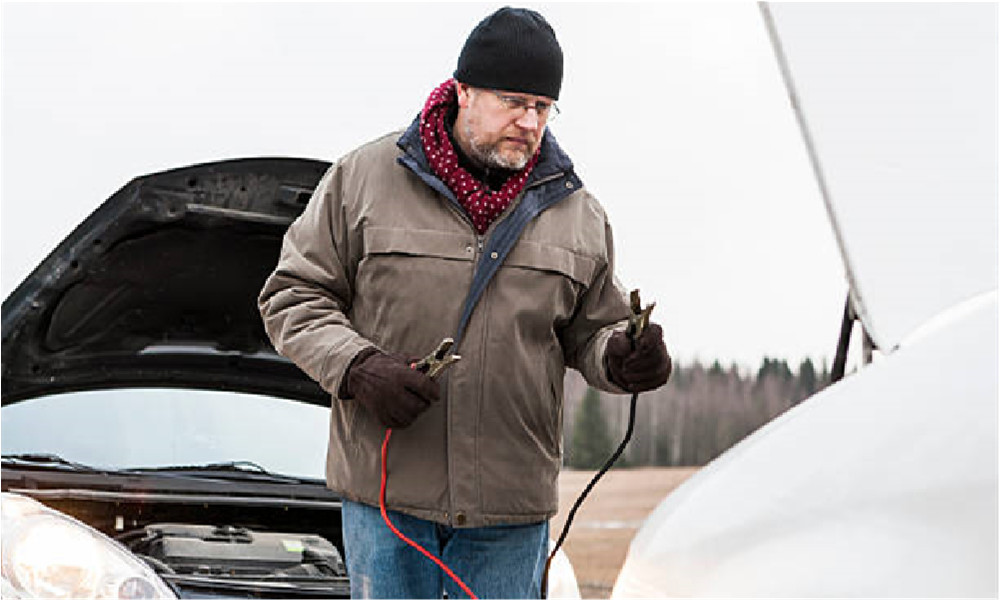So, last Friday you parked your RV and forgot to turn off the dome light or the winters are really harsh this time, there can be a number of different reasons that can lead to such an unfortunate situation where, when you kick the ignition you just hear a strange noise and RV shows no mood of turning on!
In this case, you can start your RV deep cycle battery through jump starting and this is why it is very important for every RVer to learn the basics of jump-starting as it can help and save a lot of your money.
Jump start the RV or any other vehicle can be a little tricky especially when you don’t have much knowledge of hot and cold terminals or why negative terminals are connected to the negative terminal of the other battery.
Why there are two 12 volt systems in your RV instead of 24 volts? Can you jump the RV with the car with a gas or diesel engine?
1. A perfect guide to jump start your RV deep cycle battery
You don’t have to panic as we have covered all of these questions in this new article.
Precautions:
RV has two different kinds of batteries starting and the house, both are used for different purposes but both require the same jump start method and it is highly advisable to always follow the precaution for your and for your RV safety:
1.Before you unplug the cable, understand the meaning of hot and cold terminals familiarizing with the terminals is the key thing to successfully performing this job.
2. If you see that the batteries are over bulging from the edges and don’t perform the jump start, it is highly likely that the batteries may explode or crack open. Go and purchase a new rv deep cycle battery.
3. Don’t jump start if you see any cracks or the battery is leaking. Trying to jump start will only make add more woes.
4. Sometimes in winter you will find the battery is dead frozen, don’t try to jump start use your air blower or dry blower to increase the temperature of the battery a little once you found the liquid inside the battery is in a liquid state you can safely perform the task.
5. If the terminals are overly corroded if it is advisable to first clean them with either baking soda mixed with water or with corrosion removal sprays.
2. First thing first – check the rv deep cycle battery system
Never try to jump-start the 24 volt RV system with 12 volts, it will end with a firework.
Most of the RV has two (2) batteries connected with each other. Once you open the battery compartment carefully examine the battery cables if you find that the
positive terminal (red cable) is connected with the positive (red cable) of another, this means it is a 12 volt system and in this case, you can jump-start it with any other car or RV.
But the case is a little different when it comes to a system in which the red cable (positive colored) of one battery is connected to the negative terminal (black colored cable) of the other battery, this indicates it is a 24-volt system in this case you have to buy a jump start box of 24 volts or you can disconnect the batteries and charge them separately.
Once you know the specs it is time to jump start.
After making sure the battery is in the correct condition, you’ll want to determine the type of battery you have.

3. Some measures worth remembering
Step 1
Park both RV facing each other.
Turn off the engine of bother RVs, and make sure the RV which will be used for jumping has no appliance/ electronic circuits/ light running on the batteries. Turn off all the switches.
Step 2
If both RV have battery compartments located at different places try to park in such a way that you can easily connect the cables. Once you have opened the door of the compartments, place something in front of it so it may accidentally close and remove the cables while trying to jump start.
Step 3
Once everything is ready, take out the hooking cables. You should always start from dead battery, place the hook on the positive terminal (hot terminal) of the dead battery, and then on the positive terminal of the fully working battery. But for the negative terminals, you should first connect the negative clamper on the negative terminal of the working battery and then on the dead battery terminal.
You can also connect the last negative clamper (connected to the dead battery negative terminal) anywhere on the car. Just don’t clamp it on the painted surface. This is because every metal surface on the RV is like a negative terminal.
Step 4
Once every cable is properly connected it is time to do the magic. First, start the working RV and let it run for a minute or a half. After that try to start the dead RV. It should take a longer ignition time and that’s absolutely okay.
Step 5
Removing the cable is just attaching them but in reverse order. Start from the positive terminal of working RV and then the positive terminal of previously dead RV and reverse the process.
Just please don’t touch both positive and negative clamper at the same time.
Step 6
Let the engine run for at least 15 minutes, it is better to drive it around the block.
4. Is there any optiaonal way to jump start the dead RV deep cycle battery?
YES! Technology has made many tasks easier and the same is the case for jump-starting your dead vehicle. Now you can buy a portable jump-started box and keep them in your RV trunk they don’t weigh much but they are a little costly.
As the jump start box depends on their battery it is expedient to charge them regularly, they mostly require to be charged again after every use and after every 6 months. Most of them come with battery indicators and BMS so you don’t have to worry about charging.
All you have to do is to buy a suitable box for your RV, they are specifically designed for 6,12, and 24 Voltage batteries and you should never plug in 12-volt jumper box on 24 volt battery.
The connection steps are the same as described above. Once you have connected the box the LCD on it should display the voltage level of the batteries after that press the turn-on button wait for 30 seconds and turn on the engine and that’s it.
Remember the golden rule: as long as you are following the rules and precautions there is nothing to worry about.

